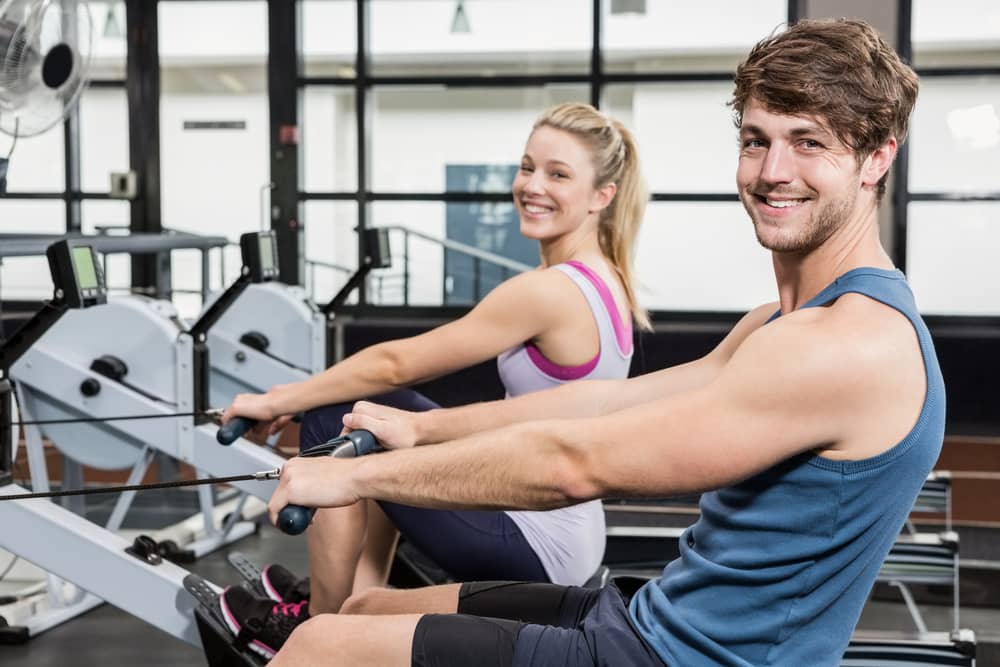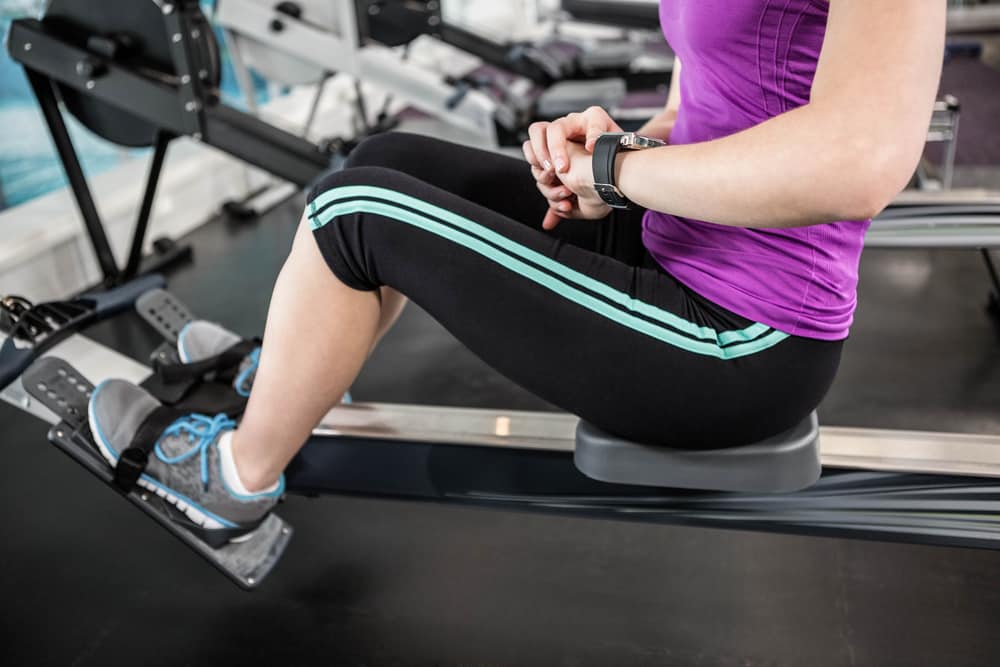Not sure what to wear for your first indoor rowing workout? Don’t worry. It’s not hard to get ready, stay comfy and be blister-free for your rowing sessions.
Good-fitting clothes that will not get in the way as you row back and forth are all you need. Accessories that protect your hands and feet are also crucial to avoid discomfort or injury.
Here’s a checklist you can use as a guide to look and feel your best while rowing indoors.
What to Wear for Indoor Rowing
Indoor rowing outfits are not as popular as yoga wear or cycling clothes.
So, it’s no surprise if you’re unsure what to wear for this exercise.
But, considering that you’ll be rowing indoors without weather elements to worry about, it’s not as complex as you think.
Some rowing enthusiasts stick to what’s comfortable during workouts and do not even wear specialised clothes.
Still, wearing proper activewear, regardless of activity type, is crucial to optimum workout performance and injury prevention.
So, here are a few pieces to consider if you want to stay comfortable and confident throughout your rowing sessions.
1. Form-Fitting Shirts
You’ve probably noticed that rowing machine riders wear semi-fitted to form-fitting tops during workouts.
This type of clothing is best for easy and distraction-free movement.
Extra loose shirts or those with tails can easily get caught on the seat rail or handlebar as you row.
So, wear tops that fit well for indoor rowing. And tuck shirt tails inside your shorts or trousers.
The tightness of your shirt is up to you, as long as it is comfortable and not too baggy.
As for fabric type, lightweight and breathable activewear materials are ideal.
You’ll sweat a lot while rowing, so ensure your top has moisture-wicking or fast-drying properties.
It’s also best to wear sleeveless or short-sleeved tops during indoor rowing for better air circulation.

2. Fitted Shorts, Capris or Leggings
Semi-fitted to form-fitting bottoms are also ideal during rowing. Some rowing enthusiasts opt for one-piece suits, too.
As it is a seated exercise, unisuits and fitted shorts or leggings will not get caught on the rower’s moving parts, like the seat rollers.
Lycra and spandex are the usual fabric choices for workout bottoms, as they are stretchable and breathable.
Also, most riders wear shorts during indoor rowing for optimum comfort and better airflow.
There are padded rowing shorts available, too.
These are best when training for extended periods or when your machine has a hard seat.
3. Low to Medium-Support Sports Bras
Rowing exercises do not involve too much bouncing.
Still, it is ideal for female riders to wear sports bras during indoor rowing workouts.
The compression from low to medium-support sports bras should prevent you from accidentally hitting your chest as you pull back.
As for general undergarments, avoid those with bulky seams.
Also, avoid wearing thongs and underwear that are loose-fitting or made of cotton.
These do not wick sweat well and can cause chafing or discomfort while rowing back and forth.
Wear seamless undergarments with a snug fit and good coverage instead.
4. Low-Heeled Running Shoes with Socks
Some people prefer to work out barefoot. It may be the most comfortable option when rowing.
But, in the long run, this habit can damage your feet and affect your workout performance.
And if you are in a commercial gym or public fitness centre, dust and dirt can get to your feet if you work out without shoes.
So, I highly recommend you wear proper foot gear when rowing indoors.
Any running shoes or trainers will do. Preferably, choose a pair with less cushioning and a lower heel.
That way, you can exert maximum power with each rowing stroke.
Make sure to wear ankle-length sweat socks, too.
The added layer of protection prevents chafing, particularly on your heels during the catch phase.
Socks also keep sweat from getting into your shoes.

5. Rowing Gloves
Constant pulling and pushing of the rowing machine handlebar create friction.
And this explains why calluses and blisters are common among riders.
Some see these dermatological issues as a badge or achievement, though.
So, most people think wearing hand protection during indoor rowing is optional, if not unnecessary.
Still, if you’re a beginner and not used to exercising with your hands, there is a higher chance for you to develop calluses and blisters, which affect overall performance.
So, I suggest wearing rowing or weightlifting gloves rather than treating these skin problems when you get them.
Choose those that are padded, light, form-fitting and breathable.
Other Clothing Reminders for Indoor Rowing
Here are a few other tips to ensure a comfortable rowing session:
- Pull and tie your hair or use sweatbands to keep bangs away from your eyes.
- Remove small accessories like rings, necklaces and bracelets when rowing.
- Pack your clothes and other essentials in a gym bag if attending an indoor rowing class.
- Wash your indoor rowing clothes after use and keep them organised.
Conclusion
With several activewear options, you won’t have any problem finding what to wear for indoor rowing workouts.
Hopefully, this list gave you ideas on what to look for and buy the next time you shop for workout clothes.
Keen to start an indoor rowing routine at home? Check out these rowing machine reviews to see which model is best for you.
Related Questions
1. Does activewear affect rowing workout performance?
Various research findings showed that workout clothes level up your overall gym performance. Aside from helping us perform better, proper clothing protects us from injury during workouts. These can boost motivation and confidence levels, too.
2. What else can I do to be better at indoor rowing?
You need to know the phases of a rowing stroke, proper form and body positioning to be better at rowing. Avoiding some common rowing mistakes can also improve your workout performance.
3. What is the best rowing machine for beginners?
Generally, a quality indoor rower with magnetic resistance is best for beginners. This type is more lightweight, compact, quiet, low maintenance and reasonably priced than similar machines. But ultimately, the choice greatly depends on your fitness goals, preference and budget.
- What Are the Advantages and Disadvantages of Folding Treadmills? - 11 March 2025
- Can You Use a Massage Gun When Pregnant? - 10 March 2025
- What is the Best Pre-Run Food? - 6 March 2025
